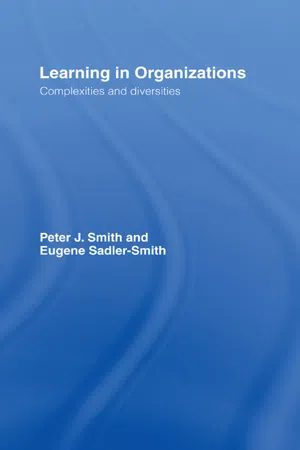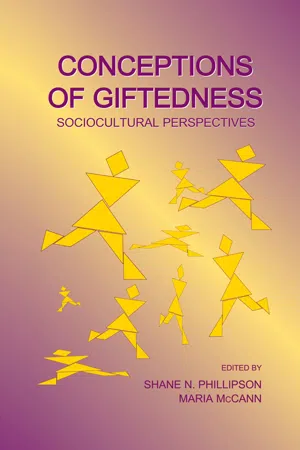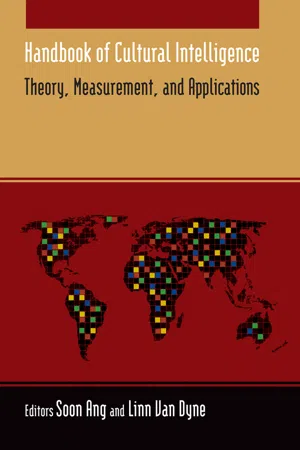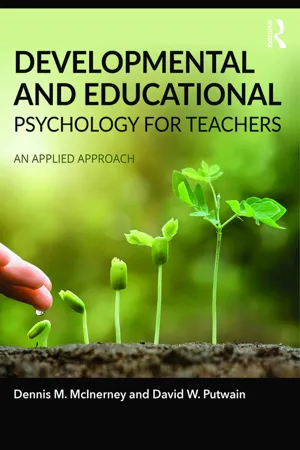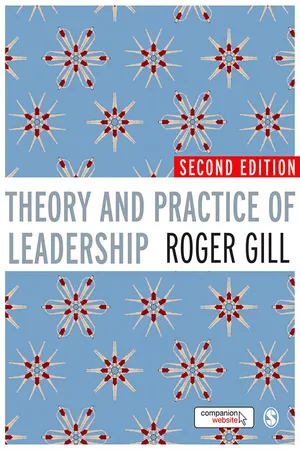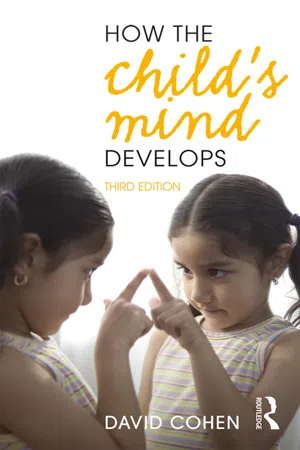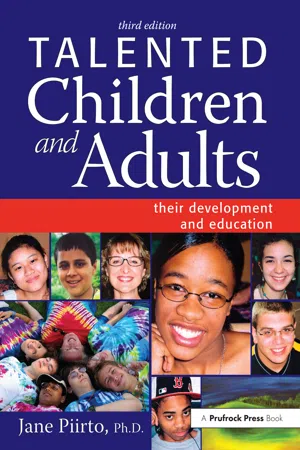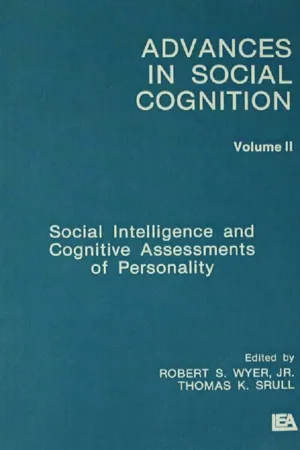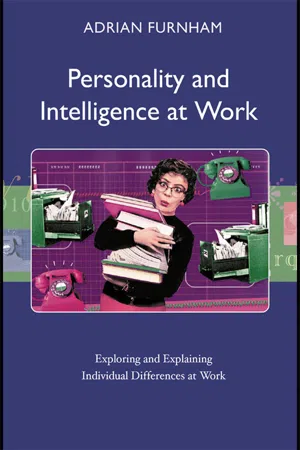Psychology
Howard Gardner
Howard Gardner is a renowned psychologist known for his theory of multiple intelligences, which suggests that intelligence is not a singular entity but rather a diverse set of capacities. He proposed that individuals possess different types of intelligence, including linguistic, logical-mathematical, spatial, musical, bodily-kinesthetic, interpersonal, intrapersonal, and naturalistic intelligences. Gardner's work has had a significant impact on education and cognitive psychology.
Written by Perlego with AI-assistance
Related key terms
Related key terms
1 of 4
Related key terms
1 of 3
12 Key excerpts on "Howard Gardner"
- eBook - ePub
Learning in Organizations
Complexities and Diversities
- Peter J Smith, Eugene Sadler-Smith(Authors)
- 2006(Publication Date)
- Routledge(Publisher)
g may bear little relationship to problems encountered in occupational and other real-world settings. These limitations have led to the view amongst a number of researchers that there is more to intelligent performance than whatever is measured by an IQ test (Sternberg and Hedlund, 2002).One of the most influential sets of ideas of the past couple of decades about the nature of intelligence has been Howard Gardner’s (1983, 1993) theory of multiple intelligences. Gardner views intelligence as reflecting a unique module of cognitive ability in a specific area; for example: musical intelligence, mathematical intelligence, and so forth which are functional in specific domains (e.g. musical intelligence is likely to have little functionality in a football game). Gardner originally proposed seven intelligences, each of which was also quite modular in that the degree to which an individual possessed each of the seven was largely independent of the degree to which they possessed the others.The seven intelligences proposed by Gardner were linguistic intelligence, logical–mathematical intelligence, spatial intelligence, musical intelligence, bodily kinaesthetic intelligence, interpersonal intelligence and intrapersonal intelligence. Although Gardner’s theory sounds similar to the primary mental abilities proposed fifty years earlier by Thurstone, Gardner saw the intelligences as separate, while Thurstone viewed them as combinatory in constituting ‘intelligence’ per se. Gardner’s theory has been influential in particular among educationalists since it allows for inclusion of aptitude, and enables differentiation among the abilities of any given individual. Additionally, the theory provides opportunity for an individual low on one of the intelligences to not be typecast as ‘unintelligent’, since the possession of other intelligences at a higher level can still occur. The model has yet to be fully explored in HRD contexts but provides the potential for a much wider range of abilities to be recognised in the workplace. One manifestation of how this is occurring is with regard to emotional intelligence (a person’s ability to perceive and manage emotion, and get along with others) (Goleman, 1995) and which appears to be quite closely allied to the inter- and intra-personal intelligences recognised by Gardner. Emotional intelligence has attained considerable significance in management, HR and HRD practice in organizations. - eBook - ePub
Conceptions of Giftedness
Socio-Cultural Perspectives
- Shane N. Phillipson, Maria McCann(Authors)
- 2020(Publication Date)
- Routledge(Publisher)
Gardner defined intelligence as “an ability or set of abilities that permit an individual to solve problems or fashion products that are of consequence in a particular cultural setting” (Ramos-Ford & Gardner, 1997, p. 55). He based his conclusions on a selective analysis of the research literature using eight criteria:- Potential isolation by brain damage
- The existence of idiot savants, prodigies, and other exceptional individuals
- An identifiable core operation or set of operations
- A distinctive development history
- An evolutionary history and evolutionary plausibility
- Support from experimental psychological tasks
- Support from psychometric findings
- Susceptibility to encoding in a symbol system
Gardner concluded that there were eight separate intelligences.The eight intelligences he proposed are linguistic, logical-mathematical, spatial, musical, bodily-kinesthetic, interpersonal, intrapersonal, and naturalist . Additional intelligences are currently being considered, such as existential intelligence.Howard Gardner’s theory is largely domain specific in the sense that Gardner highlights certain domains in which each of his intelligences is most important. However, his theory also has a domain general component because many of his intelligences can apply to a variety of different domains and in different combinations (Connell, Sheridan, & Gardner, 2003).Even though Gardner’s theory has had an important influence in the broadening of educators’ views of intelligence, various criticisms have been proposed. First, there currently exists no published empirical test of the theory as a whole. Second, the intelligences that Gardner proposes are based on selective literature that supports his hypothesis. Also, the literature he used is distinctly different from the psychometric literature, which was specifically designed to test psychometric theories of intelligence. Third, even though assessments exist to test the various intelligences (e.g., Gardner, Feldman, & Krechevsky, 1998), they have not proven to be psychometrically valid. There is some evidence to suggest, however, that they are of acceptable reliability (Plucker, Callahan, & Tomchin, 1996). Without valid tests though, it is difficult to evaluate the success of interventions. Lastly, it is not clear that the different intelligences are truly separate from one another and that each serves an independent adaptive function. - eBook - ePub
Handbook of Cultural Intelligence
Theory, Measurement, and Applications
- Soon Ang, Linn Van Dyne(Authors)
- 2015(Publication Date)
- Routledge(Publisher)
While acknowledging their interdependence, Gardner (2006) defined multiple intelligences as “computational capacities” that enable area-specific information processing and problem solving. This definition reveals an underlying acceptance that some individuals are better able to take advantage of a broader array of intelligences, or to capitalize on a specific group of intelligences, than others. Decades of research on the subject of intelligence culminated with the categorization of seven intelligences: linguistic, musical, spatial, logical-mathematical, bodily kinesthetic, intrapersonal (possessing an effective working model of oneself, the capacity to understand personal feelings), and interpersonal (capacity to accurately read the feelings and motivations of others) (Gardner, 1999). The theory defends that each individual possesses all of these intelligences to some degree. The optimism surrounding the concept of g may have been the principal source of skepticism within the academic field concerning Gardner’s theory of multiple intelligences. Nonetheless, the theory’s applicability to practical settings, in particular the school system, popularized Gardner’s view of intelligence(s) and stimulated the interest of researchers and practitioners. As a result, research on multiple intelligences was extended to contemplate individual and group-level variables such as gender and national origin (Furnham & Mottabu, 2004). This research clarified the role of individual differences on levels of intelligence and provided insight regarding differential valuation of types of intelligence across cultures. Reflecting on the possibility that there are different types of intelligence and that valuations of intelligence are specific to context, Gardner (2006) criticized g on its two major limitations. First, g is merely a function of the measures used and their conditions of application, and is therefore expected to vary across measurement instruments and populations - eBook - ePub
Developmental and Educational Psychology for Teachers
An applied approach
- Dennis McInerney, David Putwain(Authors)
- 2016(Publication Date)
- Routledge(Publisher)
Gardner believes that intellectual competence entails a set of skills of problem solving that enable individuals to resolve genuine problems or difficulties, and when appropriate, to create an effective product. Gardner also believes that intelligent behaviour must entail the potential for finding or creating problems, thereby laying the groundwork for the acquisition of new knowledge. Intelligent behaviour can be demonstrated in many different ways. The ways in which intelligences are demonstrated reflects a response to the cultural context of the individual and group (Emery et al., 2007; Ng & Earley, 2006). Gardner’s theory makes it clear that intelligence in its many facets reflects potentials that must be fostered in the environment. They will not develop fully without stimulation, encouragement, and extensive practice.Multiple intelligencesGardner (1983) originally proposed seven intelligences. These are: logical-mathematical, linguistic, musical, spatial, bodily-kinaesthetic, interpersonal, and intrapersonal. These seven were only considered as tentative, and later he proposed an additional three intelligences: naturalist, spiritual, and existential (Gardner, 1999). Each intelligence is characterised by core components such as sensitivity to the sounds, rhythms, meanings of words (linguistic), and capacities to discern and respond appropriately to the moods, temperaments, motivations, and desires of other people (interpersonal). Although few occupations rely entirely on a single intelligence, an individual with a highly developed intelligence in one of these areas may become a composer (musical), a dancer (bodily-kinaesthetic), or a therapist (interpersonal). Other occupations might require a blend of intelligences (Davis et al., 2011; Shearer & Luzzo, 2009). A surgeon, for example, needs both the acuity of spatial intelligence to guide the scalpel and the dexterity of the bodily-kinaesthetic intelligence to handle it. - eBook - ePub
- Roger Gill(Author)
- 2011(Publication Date)
- SAGE Publications Ltd(Publisher)
Naturalist intelligence . The ability to recognize, categorize and draw upon features of the natural world, for example Charles Darwin.Most of the intelligences in Gardner’s theory – if not all according to him – are to do with thinking or cognition. Russell Moxley has called for a more holistic view of leadership that integrates four arenas of the human condition: the mind (rational thought), the heart (emotions or feelings), the spirit and the body.10 Gardner considers the notion of spiritual intelligence but finds it difficult to separate it from its religious connotations, preferring to consider what he calls ‘existential intelligence’, of which spiritual intelligence is ‘one variety’.11 Even then he believes its distinctiveness from other intelligences and the supportive empirical evidence to be insufficient to propose it as a valid ninth form of intelligence. Neither does Gardner accept moral intelligence as a valid intelligence, arguing, in 1999, that there was no consensus on what it was and that, again, there was little evidence to support it.12 We revisit these issues in our model of multiple intelligences later in this chapter.Gardner’s theory of multiple intelligences has met with greater support among practitioners such as educators than among academics: his criteria for what may be called a form of intelligence have been questioned and criticized as too subjective.13 And his theory has been challenged for being grounded too much in reasoning and intuition without the compelling empirical evidence to support it. In 2001 Ronald Riggio and colleagues reported on research into how multiple forms of intelligence -cognitive intelligence (IQ), emotional intelligence and social intelligence – were associated with effective leadership.14 - eBook - ePub
Rainbows of Intelligence
Exploring How Students Learn
- Sue Teele(Author)
- 2015(Publication Date)
- Skyhorse(Publisher)
3
The Theory of Multiple Intelligences
G ardner argued that intelligence cannot be adequately assessed only by tests because paper-and-pencil measures are not always “intelligence fair.” Gardner’s theory contrasts markedly with the view that intelligence is based on a unitary or “general” ability for problem solving. Gardner introduced the theory of multiple intelligences in his book Frames of Mind (1983). This theory defines intelligence as an “ability to solve problems, or to create products that are valued within one or more cultures.” According to Gardner, each individual possesses at least seven different intelligences, each with varied abilities. The seven intelligences are identified as linguistic, logical-mathematical, spatial, musical, bodily-kinesthetic, intrapersonal, and interpersonal. The following descriptions provide abbreviated examples of the characteristics of each.Linguistic Intelligence
Linguistic students have highly developed auditory skills, enjoy reading and/or writing, like playing word games, have good memories for names, dates, and places, and prefer doing word processing on a computer. They may possess well-developed vocabularies and use language fluently, and are often able to spell words accurately and phonetically. They learn to read more effectively through a phonics approach.LINGUISTIC INTELLIGENCE- Has highly developed auditory skills
- Enjoys reading and writing
- Has a good memory
- Spells words easily and accurately
- Uses language fluently
Methods to which linguistically strong students can respond are lectures, word games, storytelling, advanced organizers, debate, speech, learning logs, reading aloud, and exercises that encourage reading, writing, spelling, and listening.It is important to remember that not all students can perform at a high level with every one of the linguistic skills. Some students may be able to read and spell well, but not write well. Some students may not be able to process through listening only. - eBook - ePub
- James Arthur, Ian Davies(Authors)
- 2012(Publication Date)
- Routledge(Publisher)
1999a ): linguistic, musical, logical-mathematical, spatial, bodily kinaesthetic, interpersonal, intrapersonal and naturalist intelligence. According to Gardner's theory, these frames are independent of each other in their development and in their functioning. They process different information specific to the given frame and they also operate separately by themselves. According to his explanation, this is why people with severe local brain damage may have serious problems with specific mental tasks while they do not have any achievement problems with other types of tasks. This is also why some autistic children with severe verbal and communication difficulties are still able to play music at the highest artistic level or solve difficult mathematical problems.Although Gardner's theory offers new approaches to human intelligence and also became very popular among psychologists, educators and everyday people, his multiple intelligence theory is seriously questioned by many experts (Schaler, 2006 ). One of the most problematic aspects is that he never developed any kind of tool with which we could measure these intelligences. Also, he never explained the way these independent intelligences harmonises with each other in the case of a given mental process, for example during problem solving, nor could he explain whether these ‘intelligences’ are really cognitive functions or rather important cultural domains related to specific talents.The impact of Gardner's multiple intelligence theory on education
Gardner's theory had a huge impact on everyday practice in schools (mainly in the United States). There are hundreds of schools which base their teaching programmes or at least a part of their education on Gardner's multiple intelligence theory. The reason is that Gardner himself translated his ideas into the language of education and published many articles and chapters on the relevance of multiple intelligence theory to education (Gardner, 1999b ; Gardner & Hatch, 1989 - eBook - ePub
- David Cohen(Author)
- 2017(Publication Date)
- Routledge(Publisher)
Psychologists such as Howard Gardner and Robert Ornstein claim that we have not one brain, but a whole set of modules or components that sometimes work together and sometimes compete for executive action. Gardner works at Project Zero at Harvard University. The project studies how children develop – and especially how they develop creatively. He has mocked the pretensions of the IQ tests. He told me that they had been designed to pick who would be a top-class colonial administrator and know how to file instructions from London or Paris while sipping gin in the middle of the tropics (Gardner interview in Cohen 1995).p.142There are seven different kinds of intelligence, Gardner claims: linguistic, logical mathematical, spatial, bodily kinaesthetic, musical, interpersonal (which we use to understand others) and interpersonal (which we use to understand ourselves).Gardner and his colleague Robert Ornstein have devised a complex model on this basis. They argue there are many separate, semi-autonomous ‘modules’ in the brain. Ornstein calls these modules ‘multi minds’; Gardner calls them ‘multiple intelligences’. Sometimes they work together; sometimes they compete. In any individual, one set of modules will be more developed than others. One shouldn’t be asking the question of whether people are more intelligent, but how bright they are on modules A, B, C and so on.p.143FIGURE 8.2 Gardner’s seven intelligences.p.144FIGURE 8.3 Drawings by 5-year-old Nadia, who is autistic (left), and an average 6½-year-old (right). Reproduced with permission from L. Selfe (1976), ‘An autistic child with exceptional drawing ability’, in G.E. Butterworth (ed.), The Child’s Representation of the World , New York: Plenum Publishing Group.The notion of modules has become influential. To test the cognitive development of a child means, Gardner argues, testing each of these intelligences separately. There is no logical reason why a child shouldn’t score very high on some intelligences and very low on others – and the intelligences don’t have to develop at the same pace. - eBook - ePub
Fundamentals of Gifted Education
Considering Multiple Perspectives
- Carolyn M. Callahan, Holly L. Hertberg-Davis, Carolyn M. Callahan, Holly L. Hertberg-Davis(Authors)
- 2017(Publication Date)
- Routledge(Publisher)
The Three-Ring Conception of Giftedness reflects a belief that efforts to define this concept must be research-based and relevant to the persons most influenced by this type of work. While it represents our interpretation of the available evidence, educators must continue the search for greater understanding of this concept which is so crucial to the further advancement of civilization. The task of providing better services to our most promising young people, however, can’t wait until theorists and researchers produce an unassailable ultimate truth because such a truth probably does not exist. But the needs and opportunities to improve educational services for these young people exist in countless classrooms every day of the week.NOTESREFERENCES1 According to Sternberg analytic abilities are those measured by typical IQ tests and include reasoning, critical thinking, etc.; creative abilities allow for the synthesis or generation of unique and useful solutions to novel problems; and practical abilities allow one to grasp and deal with everyday tasks in ways that maximize the outcomes of analytic or synthetic abilities.2 The first two intelligences—linguistic and logical-mathematical—are typically valued in schools; musical, bodily-kinesthetic, and spatial are usually associated with the arts; and another two—interpersonal and intrapersonal—are called ‘personal intelligences’ by Gardner. Gardner later concluded that naturalist intelligence also qualifies as intelligence in his Multiple Intelligences theory (Gardner, 1999).3 Above average ability may be in either general intellectual ability or in a specific aptitude within the traditional academic areas and the fine and performing arts.4 In fact, a houndstooth pattern was selected over an earlier checkerboard design in an effort to convey this interaction.Callahan, C.M., Moon, T.R., & Oh, S. (2017). Describing the status of programs for the gifted: A call for action. Journal for the Education of the Gifted , 40 (1), 20–49Collins, N. (2012, October 8). Sir John Gurdon, Nobel Prize winner, was ‘too stupid’ for science at school, The Telegraph . Retrieved from http://www.telegraph.co.uk/news/science/science-news/9594351/Sir-John-Gurdon-Nobel-Prize-winner-was-too-stupid-for-science-at-school.html .Cooper, C. R., Baum, S., & Neu, T. W. (2004). Developing scientific talent. The Journal of Secondary Gifted Education , 15 - eBook - ePub
Talented Children and Adults
Their Development and Education
- Jane Piirto(Author)
- 2021(Publication Date)
- Routledge(Publisher)
The Nature of Human Intelligence, in which he posited that there are more than 120 different kinds of intelligences spread across four categories: the Figural, the Symbolic, the Semantic, and the Behavioral. These he called “The Structure of Intellect.” Carroll (1993) called Guilford’s research methodology “idiosyncratic” and discounted the Structure, saying that it could not be replicated.However, Guilford’s idea of separate kinds of intelligence, or talent, has been quite influential in the thinking of educators of the gifted and talented. Although he has never said that he was influenced by Guilford, the most famous current splitter is Howard Gardner, who posited eight kinds of intelligence: linguistic, musical, logical-mathematical, spatial, bodily-kinesthetic, interpersonal, intrapersonal, and naturalist (1983, 1997).Heredity or Environment?In addition to making theories about general and specific intelligence, and structures and frames of intelligence, psychologists and educators debate whether intelligence is nurtured or inherited. The great nature/nurture debate still rages: What part of a person’s abilities are inherited and what part is produced by his or her environment?Darwin and Galton and the Statistical Average
Perhaps the major figure in the nature/nurture debate was, and still is, Charles Darwin, who, with his extraordinary voyage to the Galapagos Island and the resulting The Origin of Species (1859), proposed that all creatures have evolved, that the fittest survive, and, therefore, heredity is more powerful than environment, although environment acts to slowly change the creature from one thing to another. The aforementioned Francis Galton, the father of modern testing, studied families of prominence and “proved” in his famous book Hereditary Genius (1869) that genius is passed on through one’s genes. Galton’s work preceded that of the French psychologist Alfred Binet by 30 years.Karl Marx’s Das Kapital (1867) came out shortly before Hereditary Genius - eBook - ePub
Social Intelligence and Cognitive Assessments of Personality
Advances in Social Cognition, Volume II
- Robert S. Wyer, Jr., Thomas K. Srull(Authors)
- 2013(Publication Date)
- Psychology Press(Publisher)
Adaptive behavior is the natural domain for the study of personality, and adaptive behavior has all the qualities of intelligent action. It is purposive, flexibly attuned to the individual's goals, not rigidly stereotyped or indiscriminate. Our view of personality focuses on human intelligence because we believe that people use their intellectual resources to frame problems and search out solutions, give meaning to their life situations, and adapt to the demands of the settings in which they live. We are aware of the irony in proposing to place intelligence at the center of a cognitive theory of personality. In the past, the analysis of social behavior has often proceeded by analogy to intellectual behavior. Our approach can be misconstrued as postulating a single overarching dimension of social IQ, consistent and stable, on which individuals can be comparatively ranked. As noted earlier, we specifically disavow any such intent. Nevertheless, it does seem to us that any presentation of a social-intelligence view of personality requires some consideration of the ways in which intelligence has been conceptualized in the past.Conceptualizations of Intelligence
Historically, the most popular construal of intelligence has been psychometric— that is, intelligence has been defined as that which is measured by intelligence tests (Gould, 1981). Psychometricians hold that individuals differ in their capacity to perceive relations, organize and remember information efficiently, draw logical inferences, and reason through problems to solutions. Although they may differ among themselves on the question of whether these abilities cohere to form a single unitary intellectual ability, all agree that intelligence tests provide a means of ranking people with respect to their relative intelligence (Gould, 1981).A hallmark of the psychometric approach is the assumption that intelligence is an entity that can be measured, largely independent of the individual's specific knowledge about different domains in the real world (Baltes, 1986). Thus, intelligence is commonly tested with items that do not relate to the particular everyday tasks and life goals of the testees. A good example of this tendency is the distinction between fluid and crystallized intelligence (Cattell & Horn, 1978). Fluid intelligence is measured with tests of perception, memory, and reasoning that are assumed to be equally familiar (or unfamiliar) to all testees. Crystallized intelligence is measured by tests of real-world knowledge that is heavily influenced by social and cultural experience. Crystallized intelligence gives form and content to the raw potential of fluid intelligence. - eBook - ePub
Personality and Intelligence at Work
Exploring and Explaining Individual Differences at Work
- Adrian Furnham(Author)
- 2008(Publication Date)
- Routledge(Publisher)
There are very different approaches to intelligence. Sternberg (1990) identified seven academic metaphors of intelligence, their central questions and typical theorists taking each position. He argued that specific models or metaphors generate specific questions about intelligence, which theories and research seek to address. Scientists may be unaware of these metaphors, which can both limit but also expand views on intelligence. The metaphors are:- Geographic, which seeks to map the mind and understand the structure of intelligence.
- Computational, which seeks to understand information-processing programmes and processes underlying intelligence.
- Biological, which attempts to understand how the anatomy, physiology and chemistry of the brain and CNS account for intelligence through hemispheric localisation and neural transmission.
- Epistemological, which attempts to answer the fundamental question of what are the structures of the mind through which all knowledge and mental processes are organised.
- Anthropological, which asks what form intelligence takes as a cultural invention and may be comparative and relativistic.
- Sociological, which examines how social pressure (mediated learning experiences) in development are internalised.
- Systems, which is concerned with how we understand the mind as a system that crosscuts metaphors.
According to Sternberg, researchers in the controversial field of intelligence tend either to be lumpers or splitters. The former emphasises that people who tend to do well on one sort of IQ test do well on practically all others. They talk of general intelligence (g) and see the IQ score (derived, of course, from a good test) as highly predictive of educational, business and life success.Splitters, on the other hand, are advocates of multiple intelligence. Sternberg himself is a splitter and a well-known advocate of practical or successful intelligence (Sternberg, 1997a). Claims and evidence for the theory, however, have been exhaustively and analytically investigated and found wanting (Gottfredson, 2003a). Some of these issues will be discussed in Chapter 7
Index pages curate the most relevant extracts from our library of academic textbooks. They’ve been created using an in-house natural language model (NLM), each adding context and meaning to key research topics.
Explore more topic indexes
Explore more topic indexes
1 of 6
Explore more topic indexes
1 of 4
